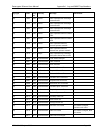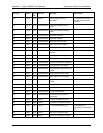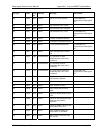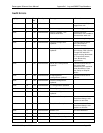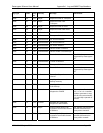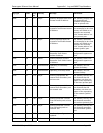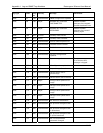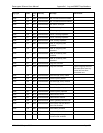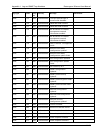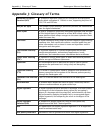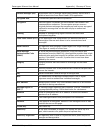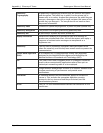
Appendix J: Glossary of Terms Datacryptor Ethernet User Manual
Page 132 THALES
Appendix J: Glossary of Terms
Advanced Encryption
Standard (AES)
A symmetric algorithm (same key for encryption and decryption)
using block encryption of 128 bits in size, supporting key sizes of
128, 192 and 256 bits.
Bits per Sec (bps) The number of bits passing a point every second; the transmission
rate for digital information.
Block cipher A type of symmetric (secret-key) encryption algorithm that encrypts
a fixed length block of plaintext at a time. With a block cipher, the
same plaintext block always encrypts to the same ciphertext block,
under the same key.
Certificate A digital document which helps to prevent someone impersonating
someone else. Each certificate contains a certified public key and
other information such as issuer’s name and algorithms used in
encryption and decryption.
Certification Authority
(CA)
A certificate authority is a trusted organization that accepts
certificate applications, authenticates applications, issues
certificates, and maintains status information about certificates.
Cipher block chaining
(CBC)
A method of using a block cipher in which two identical plaintext
blocks encrypt to different ciphertexts.
Ciphertext An unintelligible form of data that can only be read if specific
operations are performed on it using a key and decrypting
algorithm.
Ciphertext Stealing
(CTS)
CTS mode is a Datacryptor mode of operation that minimizes the
latency caused by the encryption of the Ethernet packets passing
through the Datacryptor unit.
Command Line Interface
(CLI)
The CLI is the text-based user interface to the Datacryptor.
Diffie-Hellman A protocol which allows two users to agree a secret key over an
insecure medium without any prior secret keys.
Digital Signature A digital signature must be difficult to repudiate, and must protect
the integrity of the information being signed. By encrypting a
digest of a message with the private key, authentication can later
be performed by applying the public key to an encrypted digest
(digital signature) and comparing the result to the digest of the
message.
Digital Signature
Standard (DSS)
A standard for digital signatures using the DSA public key
algorithm and the SHA-1 hash algorithm.
DSA An abbreviation for Digital Signature Algorithm. It is an algorithm
used for authentication only.
DSA public parameters Parameters used to generate and check DSA digital signatures.



